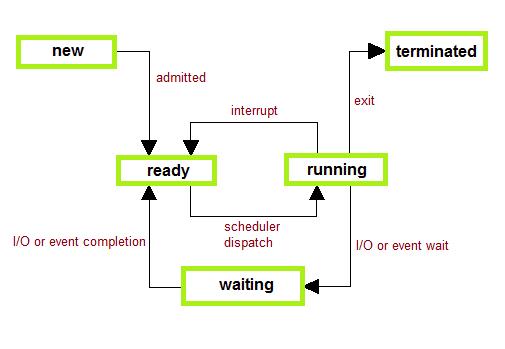what is RTlinux?
System that has to perform its functions by responding to synchronous or asynchronous events within a specified amount of time.RTLinux
is not an operating system by itself, but rather an extension to already
available Linux distributions,which adds real-time functionality. The real-time
operating system application which RTLinux adds is called RTCore. RTCore takes
over interrupt control from the client Linux OS and has its own real-time
scheduler.Though, the client Linux OS still has it's own scheduler and
schedules it's own processes. This means that the client Linux OS doesn't know
about RTCore and can't preempt it.
Why RT linux?
The reasons for the design
of RTLinux can be understood by examining the working of the standard Linux
kernel. The Linux kernel separates the hardware from the user-level tasks. The
kernel uses scheduling algorithms and assigns priority to each task for
providing good average performances or throughput.Thus the kernel has the ability to suspend any user-level task,
once that task has the time-slice allotted to it by the CPU. This scheduling
algorithms along with device drivers, uninterruptible system calls, the use of
interrupt disabling and virtual memory operations are sources of
unpredictability. That is to say, these sources cause hindrance to the realtime
performance of a task. You might already be familiar with the non-realtime
performance, say, when you are listening to the music played using 'mpg123' or
any other player.
After executing this process for a pre-determined time-slice,
the standard Linux kernel could preempt the task and give the CPU to another
one (e.g. one that boots up the X server or Netscape). Consequently, the
continuity of the music is lost. Thus, in trying to ensure fair distribution of
CPU time among all processes, the kernel can prevent other events from
occurring. A realtime kernel should be able to guarantee the timing
requirements of the processes under it. The RTLinux kernel accomplishes
realtime performances by removing such sources of unpredictability as discussed
above. We can consider the RTLinux kernel as sitting between the standard Linux
kernel and the hardware. The Linux kernel sees the realtime layer as the actual
hardware. Now, the user can both introduce and set priorities to each and every
task.
The user can achieve correct timing for the processes by deciding on the
scheduling algorithms, priorities, frequency of execution etc. The RTLinux
kernel assigns lowest priority to the standard Linux kernel. Thus the user-task
will be executed in realtime. The actual realtime performance is obtained by
intercepting all hardware interrupts. Only for those interrupts that are
related to the RTLinux, the appropriate interrupt service routine is run. All
other interrupts are held and passed to the Linux kernel as software interrupts
when the RTLinux kernel is idle and then the standard Linux kernel runs. The
RTLinux executive is itself nonpreemptible. Realtime tasks are privileged (that
is, they have direct access to hardware), and they do not use virtual memory.
Realtime tasks are written as special Linux modules that can be dynamically
loaded into memory. The initialization code for a realtime tasks initializes
the realtime task structure and informs RTLinux kernel of its deadline, period,
and release-time constraints. RTLinux co-exists along with the Linux kernel since
it leaves the Linux kernel untouched. Via a set of relatively simple
modifications, it manages to convert the existing Linux kernel into a hard
realtime environment without hindering future Linux development.



